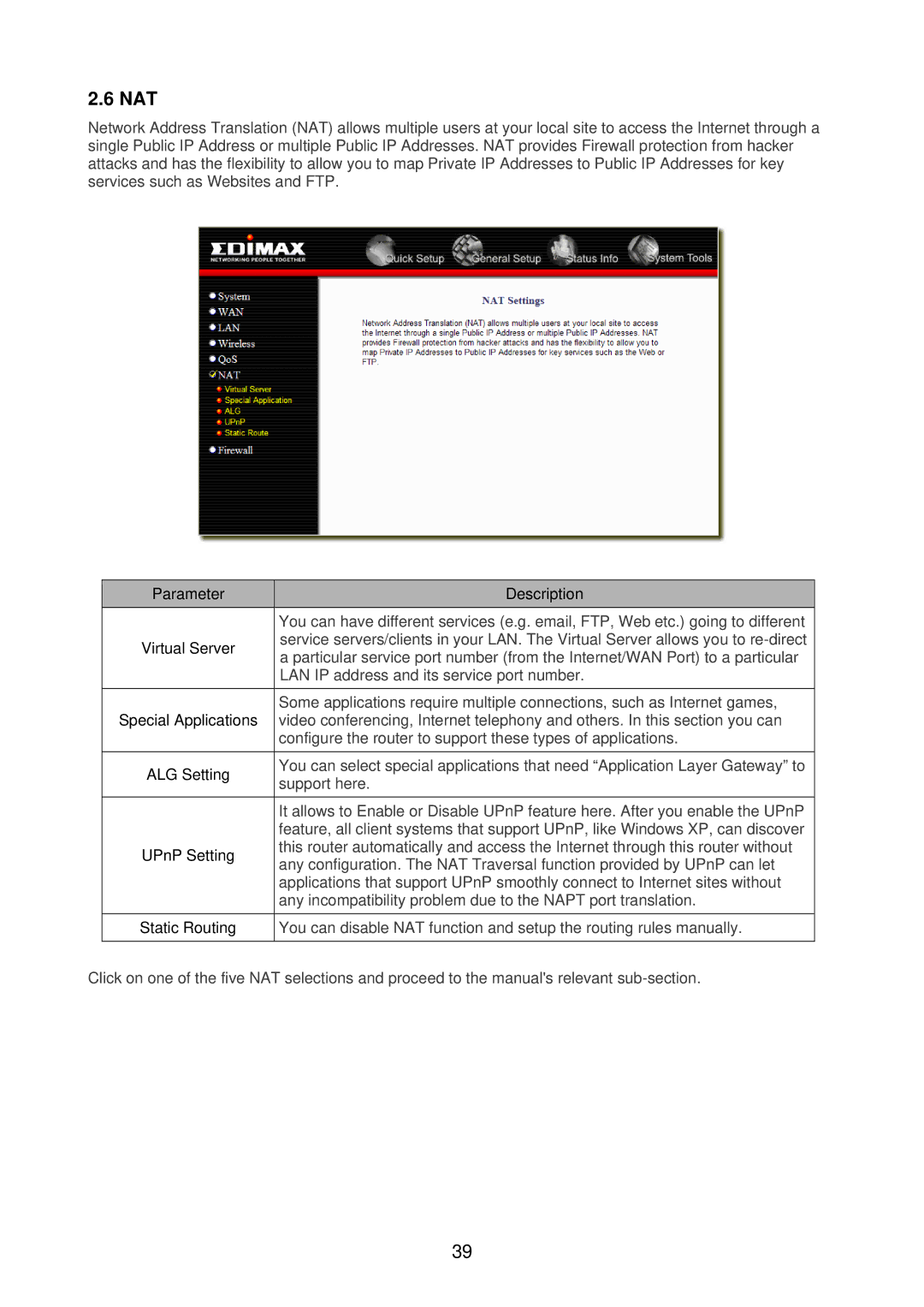
2.6 NAT
Network Address Translation (NAT) allows multiple users at your local site to access the Internet through a single Public IP Address or multiple Public IP Addresses. NAT provides Firewall protection from hacker attacks and has the flexibility to allow you to map Private IP Addresses to Public IP Addresses for key services such as Websites and FTP.
| Parameter |
| Description |
|
|
| You can have different services (e.g. email, FTP, Web etc.) going to different |
| Virtual Server |
| service servers/clients in your LAN. The Virtual Server allows you to |
|
| a particular service port number (from the Internet/WAN Port) to a particular | |
|
|
| |
|
|
| LAN IP address and its service port number. |
|
|
|
|
| Special Applications |
| Some applications require multiple connections, such as Internet games, |
|
| video conferencing, Internet telephony and others. In this section you can | |
|
|
| configure the router to support these types of applications. |
|
|
|
|
| ALG Setting |
| You can select special applications that need “Application Layer Gateway” to |
|
| support here. | |
|
|
| |
|
|
| It allows to Enable or Disable UPnP feature here. After you enable the UPnP |
|
|
| feature, all client systems that support UPnP, like Windows XP, can discover |
| UPnP Setting |
| this router automatically and access the Internet through this router without |
|
| any configuration. The NAT Traversal function provided by UPnP can let | |
|
|
| |
|
|
| applications that support UPnP smoothly connect to Internet sites without |
|
|
| any incompatibility problem due to the NAPT port translation. |
| Static Routing |
| You can disable NAT function and setup the routing rules manually. |
|
|
|
|
Click on one of the five NAT selections and proceed to the manual's relevant
39
